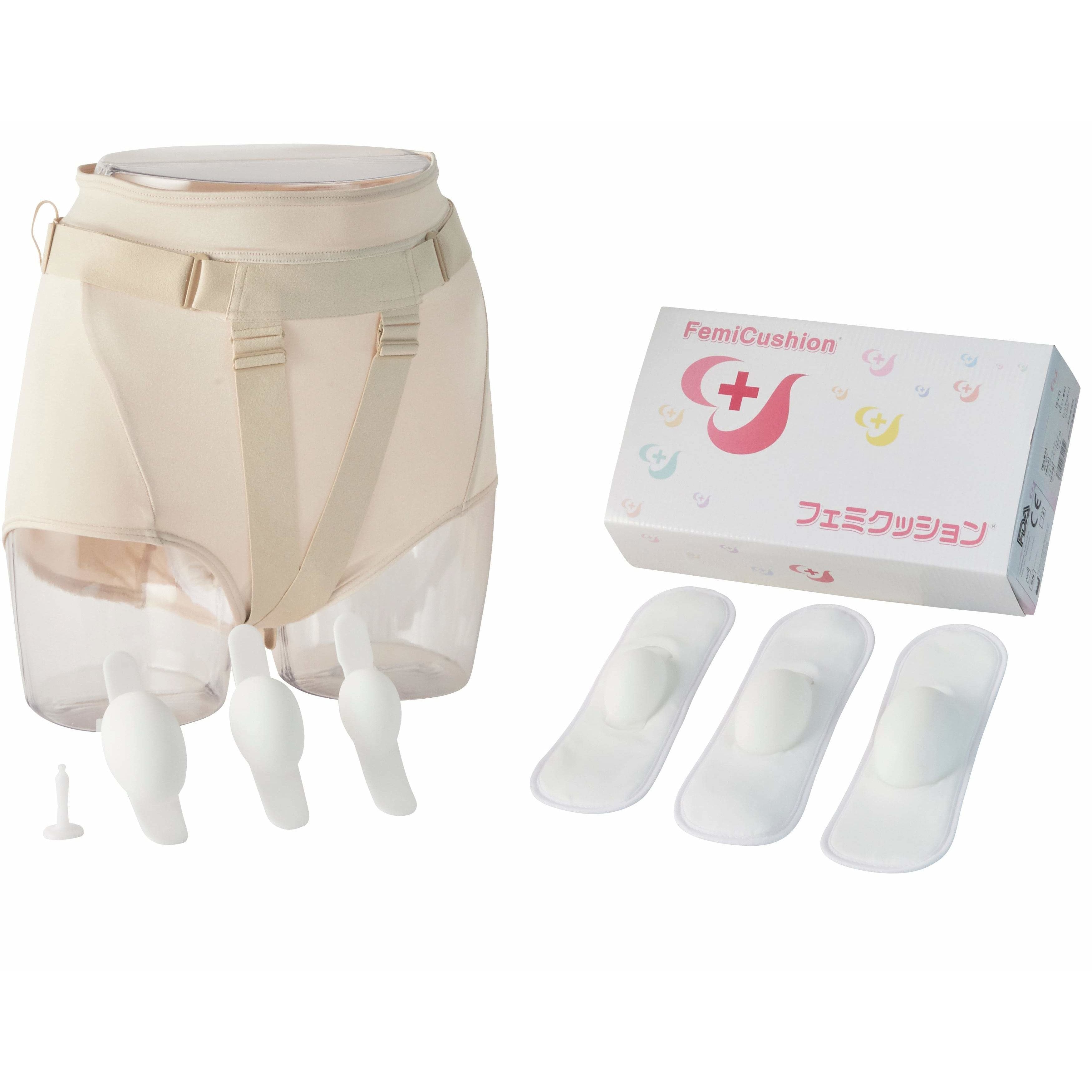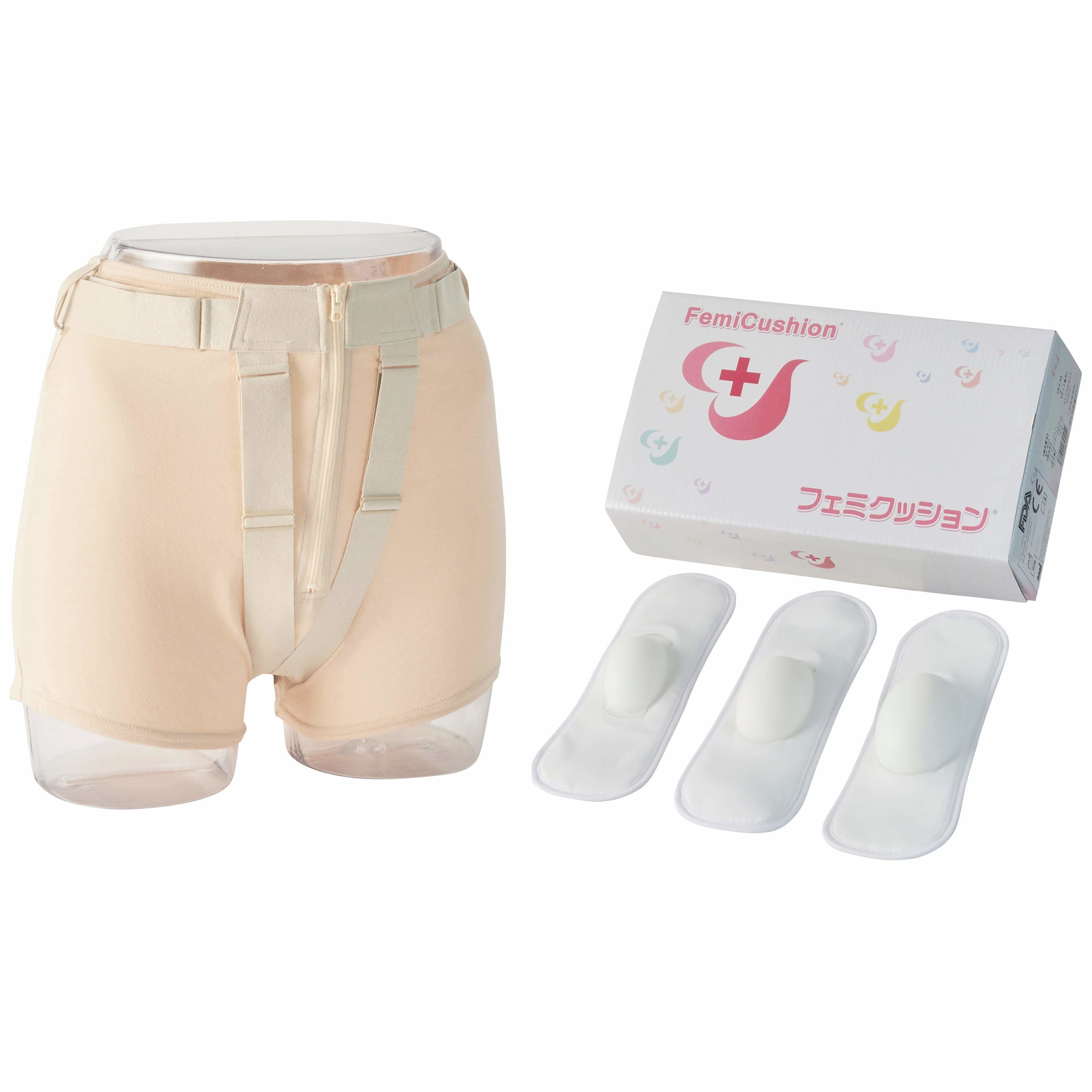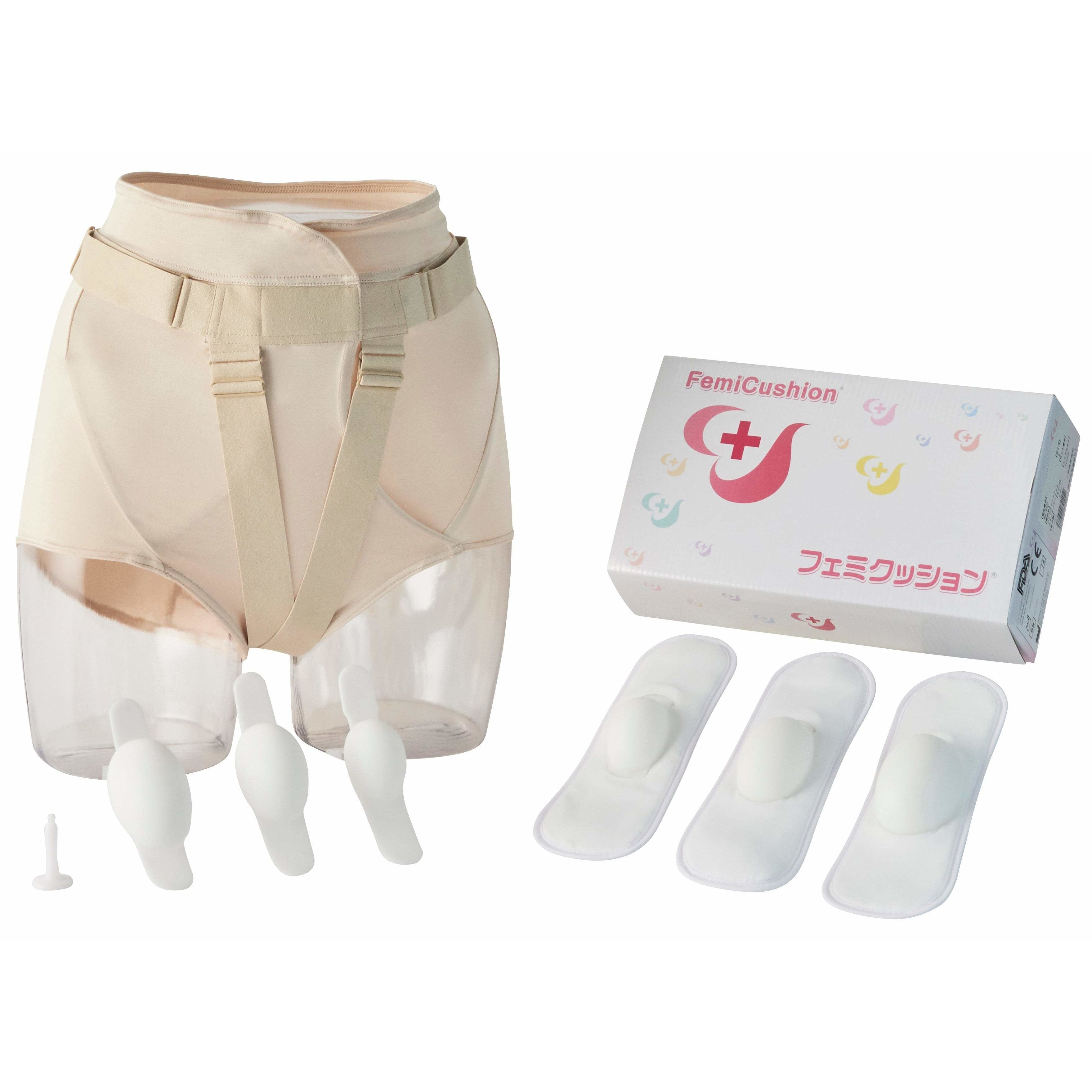Comparison Of Pessaries And Pelvic Belts | Pros and Cons
Summary
Table of Contents

Coping with pelvic organ prolapse usually requires a variety of treatment methods. You may need to change your diet or add a few regular activities to relieve symptoms. In some cases, your doctor may recommend using a pessary or a pelvic belt for additional support.
What are these devices, and which is best for your situation? Here’s what you should know.
What is a pessary? How Pessary Work?
Pessaries are vaginal devices used to treat pelvic organ prolapse, urine incontinence, and fecal incontinence symptoms as well as to offer mechanical support to the pelvic organs. They function by physically supporting and elevating the pelvic organs, relieving strain on the muscles and ligaments of the pelvic floor, and encouraging appropriate organ positioning.
Pessaries come in a variety of shapes and designs, such as the ring, cube, donut, and gellhorn, among others. The pessary is inserted and removed through the vaginal opening by a healthcare practitioner and is made of flexible materials like silicone or latex.
Once inserted, the pessary should be checked on a regular basis to make sure it is still there and not causing any pain or discomfort. It is also important to remove the pessary every 3-6 months for cleaning or replacement. Vaginal washing may also be recommended. If a person is not a good candidate for surgery, pessaries can be used as a long-term treatment or as a temperory measure while waiting for surgery.
Pessaries are not suitable for everyone, thus they must be prescribed and fitted by a medical practitioner who will assess the patient's anatomy and symptoms before recommending the best kind of pessary. Women who had certain pelvic floor surgeries or women with severe prolapse may not be able to keep the pessary inside the body.
How does Pelvic Support Belts Work?
Pelvic support belts are used to relieve pelvic organ prolapse symptoms and offer external support to the pelvic organs. When the pelvic organs—such as the uterus, bladder, or rectum—drop from their usual positions and press up on the vaginal walls, this condition is known as pelvic organ prolapse.
In order to relieve pressure on the pelvic floor muscles and ligaments and to maintain correct organ positioning, pelvic support belts offer external support to the pelvic organs. The belts can be adjusted for a comfortable and secure fit and are often composed of breathable and flexible materials, including cotton or spandex.
Pelvic support belts can be worn under clothing during the day and removed at night. They may be used independently or in conjunction with other therapies such pelvic floor exercises, dietary modifications, or surgery.
It's important to note that a healthcare professional should recommend and fit pelvic support belts since they can assess a person's anatomy, symptoms, and recommend the best kind of belt based on those factors. Pelvic support belts may not be appropriate everyone or suitable for all types of pelvic organ prolapse.
The Differences Between Pessaries and Pelvic Belts
Pessaries and pelvic support belts are both used to support the pelvic organs and treat the symptoms of pelvic organ prolapse. Although they provide similar functions, there are some significant distinctions between the two devices:
-
Method of Support
: Pelvic support belts are worn externally around the waist and hips to offer external support for the pelvic organs while pessaries are insterted into the vagina to provide internal support for the pelvic organs. For some types of pelvic organ prolapse, the internal support offered by pessaries may be more effective, whilst for others, the external support offered by pelvic support belts may be more comfortable. -
Material
: Pelvic support belts are often composed of breathable, flexible materials like cotton or spandex, whereas pessaries are typically made of flexible materials like silicone or latex. Given that pessaries come into contact with the vaginal tissues frequently, the material employed for them should be safe and non-toxic. Use
: Unlike pelvic support belts, which are normally designed to be worn temporarily and only during the day, pessaries are meant to be used long-term. For people with mild to moderate pelvic organ prolapse, pelvic support belts might offer momentary comfort; however, more severe cases might necessitate the use of a pessary for long-term support.
-
User Experience
: The user has complete control when using pelvic support belts. They can take it off and put it whenever they wish. However, for pessaries, it may require a health care processional to remove and insert it back into the body after the initial fitting. The patient may also need to frequent the doctor for vaginal washing to keep up with the maintenance of pessary use to avoid infections. -
Effectiveness
: Depending on a person's anatomy and degree of pelvic organ prolapse, pessaries and pelvic support belts may or may not be beneficial. Some people might notice a substantial difference with just one device, while others might need to use both at once. -
Prescription
: Pessaries and pelvic support belts should both be prescribed and inserted by a medical practitioner who will assess the patient's anatomy and symptoms before advising on the best kind of device. This is crucial since a pelvic support belt or pessary that isn't fitted properly might make you uncomfortable or perhaps make the symptoms of pelvic organ prolapse worse.
Pelvic support belts and pessaries can both be helpful in supporting pelvic organs and reducing pelvic organ prolapse symptoms. Although there is some overlap in the types of support that they provide, a pessary may not be able to serve as an alternative to a pelvic belt, and vice versa. The decision between the two should be decided in cooperation with a healthcare provider and will be based on the person's anatomy, symptoms, and preferences.
Pros and Cons of Pessaries
Pessaries are usually made of silicone and come in different shapes, depending on the organs that need support. Sizes depend on the type of prolapse and the unique aspects of your anatomy, ranging from about 3 to 13 centimeters, or roughly 1 to 5 inches.
A pessary may be able to help you avoid surgery, however, there are a few cons to a pessary that you should consider. Pessaries are not able to be used by all woman and must be fitted by a doctor. It is recommended you wear it consistently for maximum effect. Pessaries must be taken out often for cleanings, which can only be done by your doctor. Another con of pessaries is the potential of odor, discomfort and even can lead to an infection if not handled and treated properly.
Pros and Cons of Pelvic Belts
A pelvic belt is meant to be worn outside the body. In some cases, it can double as a lower undergarment. Pelvic belts vary significantly in the type of support they are intended to provide. For example, pelvic belts for pregnancy and postpartum may provide most of their assistance around the hips and belly, not the pelvic floor. Unlike Pessaries, all women can wear pelvic belts and a doctor is not required.
The chief advantage of a pelvic belt is that it is non-invasive and doesn’t need to be worn all the time. On the other hand, a pelvic belt may not be enough to resolve prolapse symptoms. These belts are typically meant to be used in conjunction with pelvic floor therapy, lifestyle changes and other treatments.
Doctor’s Advice
Before choosing any of these devices, it’s important to talk to your doctor. In the case of pessaries, you usually need to have them prescribed and fitted by a medical professional. A pelvic belt is easier to purchase online. However, buying the wrong size or wearing a belt in the wrong way may not relieve symptoms, and it can restrict blood flow or cause other problems.
If you are noticing symptoms of pelvic organ prolapse such as incontinence or pain in the pelvic floor, you should seek medical attention first.
Comparison of Pessaries and Pelvic Belts | Pros and Cons
When you talk to your doctor about support for pelvic organ prolapse, you might hear about pessaries and pelvic belts. Understanding the differences can help you make an educated choice.
Comparison of FemiCushion to Other Prolapse Support Garments
There are many different types and styles of prolapse support underwear and prolapse floor support pants on the market today. With so many choices to pick from, it can get overwhelming and make it hard to choose the best one that works for you. FemiCushion is the only prolapse support device that uses a soft silicone cushion to provide direct support to the prolapsed organ. This patented design is effective and is one that no other brands can offer. The cushion forms to the shape of the body for the upmost comfort and allows it to provide full support from all angles. This is the reason why the cushion is so effective at keeping the prolapsed organ inside the body and relieving prolapse symptoms. The supporter included in each FemiCushion kit is consciously designed to fit many different body shapes and sizes. Each supporter has adjustable waist straps that can be loosened or tightened according to patient’s preference and body fluctuations.
Many women with pelvic organ prolapse also suffers from urinary incontinence as a symptom. This is not a problem when using FemiCushion, as the holder that secures the cushion to the supporter is designed to absorb any excess discharge or liquid. The holder is made up of a combination of different fabrics for the ability to be absorbent and remain dry on the surface for comfortable wear. In addition to cloth holders, disposable holders are also offered. They are created to work perfectly with FemiCushion and a must have for on the go women or those who experience heavy urine leakage.
FemiCushion is a noninvasive support garment that offers customized features to support the pelvic floor. To learn more, read our frequently asked questions or contact us today.
Supervising Doctor of This Article

Koichi Nagao, MD PhD
Professor, Department of Urology, Toho University Faculty of Medicine
Director of Urinary tract reconstruction center, Toho University Omori Medical Center
Director of Reproduction Center, Toho University Omori Medical Center
Professor Nagao specializes in plastic surgery in the field of reproductive medicine. He completed eight years of plastic surgery training at Showa University before majoring in urology at Toho University. With his meticulous surgical techniques and careful examinations that combines urology and plastic surgery, Professor Nagao became a Board Certified Specialist with multiple associations including the Japanese Urological Association, the Japan Society for Reproductive Medicine, and the Japanese Society for Sexual Medicine.
The suggested Products

FemiCushion Standard Deluxe Kit
$299.99

Conjunto de FemiCushion Lite
$249.99

Kit FemiCushion EasyOpen Deluxe
$299.99
